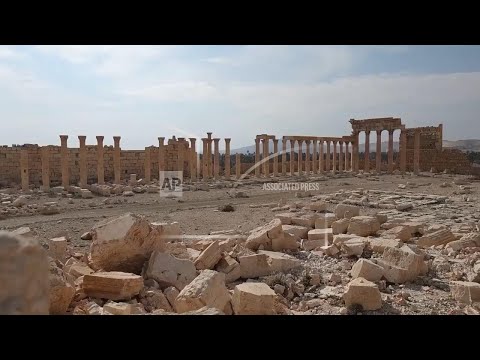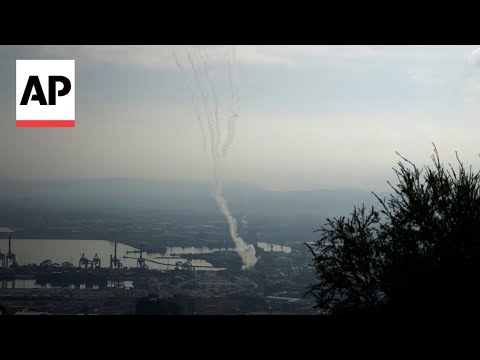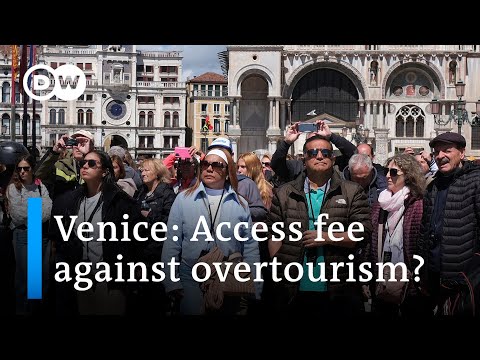(17 Feb 2025)
RESTRICTION SUMMARY:
ASSOCIATED PRESS
Palmyra, Syria – 25 January 2025
1. Various of Roman ruins in Palmyra ++PART MUTE++
2. Close of postcard showing ruins
3. SOUNDBITE (Arabic) Ayman Nabu, researcher and expert in ruins:
++STARTS ON SHOT 1 AND PARTIALLY OVERLAID BY SHOTS 4 AND 5++
“Syria has a treasure of ruins, which is well known, meaning that Syria is visited by sun and antiquities lovers from all over the world. So it is necessary to develop plans for the tourism sector in a way that is consistent with Syria’s historical reality and its historical context. Through our field visits after the liberation, we discovered that there are sites that need rapid intervention, especially to prevent collapses and cracks that were caused by previous battles or during the previous years. Museums also need to be re-documented and archived electronically directly so that a complete national database on the contents of museums can be accessed.”
4. Various drone shots of ruins
5. Various of ruins ++PART MUTE++
STORYLINE:
Experts are returning to Syria’s war-ravaged heritage sites, hoping to lay the groundwork for restoring them and reviving tourism, which they say could provide a much-needed boost to the country’s decimated economy after nearly 14 years of war.
Once-thriving landmarks like the ancient city of Palmyra and the medieval Crusader castle of Crac des Chevaliers remain scarred by years of conflict, but local tourists are returning to the sites, and conservationists hope their historical and cultural significance will eventually draw international visitors back.
Palmyra, one of Syria’s six UNESCO World Heritage sites, was once a key hub to the ancient Silk Road network linking the Roman and Parthian empires to Asia.
Before the Syrian uprising that began in 2011 and soon escalated into a brutal civil war, the desert site renowned for its 2,000-year-old Roman-era ruins attracted around 150,000 visitors monthly, according to Ayman Nabu, a researcher and expert in ruins.
The ancient city, dubbed the “Bride of the Desert", was the capital of an Arab client state of the Roman Empire that briefly rebelled and carved out its own kingdom in the third century, led by Queen Zenobia.
But in more recent times, the area had darker associations as it was home to Tadmur prison, where thousands of opponents of the Assad family were held.
The Islamic State group demolished the prison after capturing the town.
IS militants later destroyed Palmyra’s historic temples of Bel and Baalshamin and the Arch of Triumph, viewing them as monuments to idolatry, and beheaded an elderly antiquities scholar who had dedicated his life to overseeing the ruins.
Between 2015 and 2017, control of Palmyra shifted between IS and the Syrian army before Assad’s forces, backed by Russia and Iran-aligned militias, recaptured it.
They established military bases in the neighboring town, which was left heavily damaged and largely abandoned.
Fakhr al-Din al-Ma’ani Castle, a 16th-century fortress overlooking the city, was repurposed by Russian troops as a military barracks.
Nabu, the researcher, visited Palmyra five days after the fall of the former government and said he had noted significant destruction by both IS and Assad government forces, while many arteficts and documents had gone missing.
Talking to The Associated Press, he said Syria had "a treasure of ruins”, but he emphasized the need for preservation efforts.
AP video shot by Ghaith Alsayed
===========================================================
Find out more about AP Archive: http://www.aparchive.com/HowWeWork
Twitter: https://twitter.com/AP_Archive
Facebook: https://www.facebook.com/APArchives
Instagram: https://www.instagram.com/APNews/
You can license this story through AP Archive: http://www.aparchive.com/metadata/youtube/566c9bb2c9874e8f92f4737df145ce81
Author: AP Archive
Go to Source
News post in February 22, 2025, 6:05 am.
Visit Our Sponsor’s:
News Post In – News





